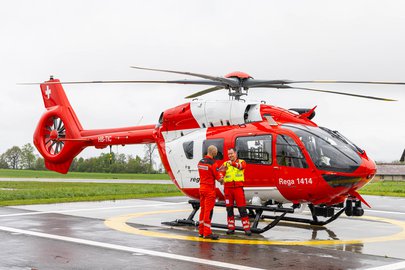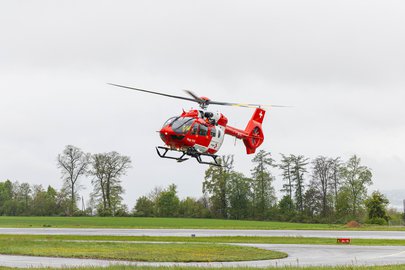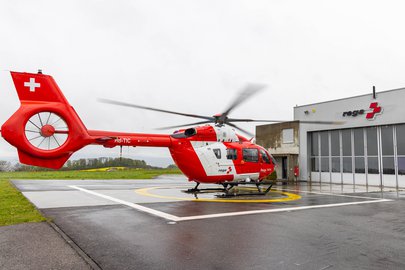The new Airbus H145 D3 rescue helicopter was delivered today successfully to Rega's Lausanne team, which will be the first in Switzerland to work with the new model. The transfer flight to Lausanne from the Rega centre in Zurich went smoothly.
This helicopter opens up new perspectives, thanks to the addition of a fifth rotor blade. This additional power will increase safety during rescue flights. The fifth rotor blade also greatly reduces the vibrations in the cabin, thus providing unparalleled comfort for patients and crew.
The new helicopter is benefiting from feedback about the cabin. A new cabin was therefore developed to improve the medical care for patients. A multidisciplinary team, comprising physicians, paramedics and engineers, worked for almost two years on possible improvements.
The new rescue helicopter will also be able to carry an additional load of 150 kg, which is an advantage if specialists or extra equipment needs to be carried. This improvement will pay off if mountain rescuers are on board who will use winches in difficult terrain. Given its performance, the Airbus H145 D3 is ideal for winching operations in high mountain areas.
The new rescue helicopter also features other technological advances. One is a state-of-the-art navigation system which guarantees greater accuracy over instrument flights.
Once the medical equipment is installed on board the new rescue helicopter, the Lausanne team will be the first in Switzerland to use one of the most modern rescue helicopters in the world.
A rescue helicopter for a wide range of missions
This is a major step in Rega’s largest acquisition project. At a cost of 200 million francs, Rega has acquired 21 new rescue helicopters which will be deployed at its 14 operational bases by the end of 2026.
By standardising its fleet, Rega will be able to better exploit synergies in terms of training its crew and maintenance.
The crew at the Lausanne base conducts around 800 rescue missions per year, almost a quarter of which at night. The range of rescue missions is broad, covering interhospital transfers, accidents in the mountains and cases of acute illness. The new helicopter will make it possible to take care of all kinds of patients.
To enable it to exploit its potential, the Lausanne team underwent specific training on the new systems, both on the ground and in the simulator.
With this state-of-the-art helicopter, Rega is embarking on a new stage in its rescue missions, ensuring ever-more efficient care for its patients.


